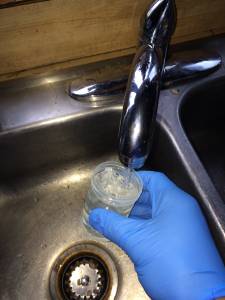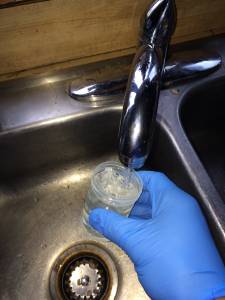According to the center for disease and control (CDC) lead found in tap or drinking water usually comes from the corrosion of older fixtures or from the solder that connects pipes. When water sits in leaded pipes for several hours, lead can leach into the water supply.
But My Town Checks for Lead – Should I Be Concerned?
You should be concerned about lead in your drinking water unless:
- Your house is built after 1986
- Your plumbing has been replaced and
- You are sure that you don’t have a lead pipe in front of your house.
Water that’s lead free coming out of the treatment plant can become dangerously contaminated as it travels onto a home’s property. Water passing through any pipes made of lead or that have lead solder or if it goes through fixtures containing lead may cause small lead particle to break apart and enter your drinking water supply.
https://www.youtube.com/watch?v=qABEy3c5li8
Does a high lead level in my tap or drinking water cause health effects?
High levels of lead in tap water can cause health effects. If the lead in the water enters the bloodstream it can cause elevated blood lead levels.
What About the Test Kits from the Hardware Store?
Test kits from the hardware store typically will not measure down to low enough lead levels that can still cause harmful health effects. Furthermore, Pro-Lab test kits contain a “certification” “IAC2 CERTIFIED.” But in smaller print, the logo says it is for the “International Association of Certified Indoor Air Consultants,” which doesn’t make sense for water testing. It is also noteworthy that Pro-Lab agreed to pay the Florida AG $20,000 in 2008 to settle concerns about language used in its promotion of a Lead Surface Test Kit
We recommend you test your drinking water:
- At least annually using a certified local laboratory meeting both local and national drinking water standards
- If you notice a change in odor, taste or color
- Have any medical concerns
- Completed recent renovations that could have disturbed the plumbing network.
Additional resources are linked below
https://www.epa.gov/sites/production/files/2015-11/documents/2005_09_14_faq_fs_homewatertesting.pdf
https://www.cdc.gov/healthywater/drinking/drinking-water-faq.html







